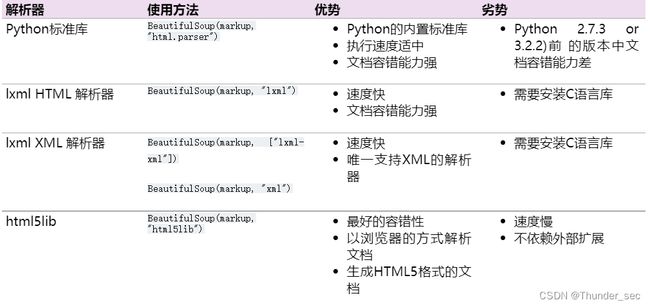- 基于MATLAB的资源优化与工期固定-资源均衡分析方法研究【附代码】
拉勾科研工作室
matlab开发语言
算法与建模领域的探索者|专注数据分析与智能模型设计✨擅长算法、建模、数据分析matlab、python、仿真✅具体问题可以私信或查看文章底部二维码✅感恩科研路上每一位志同道合的伙伴!(1)资源均衡优化相关理论与问题分类在现代工程项目中,资源的合理分配和使用是确保项目按时完成、成本可控的关键因素。资源均衡优化作为项目管理中的核心环节,旨在通过调整资源的使用方案,使资源消耗在整个工期内尽可能平稳,避免
- 医学图像增强的层级化模糊与虚拟仪器无参考质量评价研究【附代码】
拉勾科研工作室
计算机视觉图像处理人工智能
算法与建模领域的探索者|专注数据分析与智能模型设计✨擅长算法、建模、数据分析matlab、python、仿真✅具体问题可以私信或查看文章底部二维码✅感恩科研路上每一位志同道合的伙伴!(1)层级模糊隶属度的X光医学图像增强算法针对X光医学图像普遍存在的对比度差、细节模糊等问题,本算法提出了一种基于层级模糊隶属度的增强方法。该方法的核心思想在于利用拉普拉斯金字塔分解图像,并在多尺度下分层计算模糊隶属度
- 【免费下载】 探索无线连接的奥秘:ESP8266 WiFi模块原理图详解
虞勋臣
探索无线连接的奥秘:ESP8266WiFi模块原理图详解【下载地址】ESP8266WiFi模块原理图下载ESP8266WiFi模块原理图下载项目地址:https://gitcode.com/Open-source-documentation-tutorial/7efe1项目介绍在物联网(IoT)和嵌入式系统领域,ESP8266WiFi模块凭借其低成本、高性能和易于集成的特点,成为了众多开发者的首选
- 【半夜爬起来学python】零基础学习Pygame|第一期|知识点+小球反弹游戏案例
奈樱.
python(pygame)pygame学习游戏pip
一.安装PygamePygame是跨平台Python模块,很多编译器不会向用户提供该模块,需要我们自己安装。安装步骤:打开Pygame官网:www.pygame.org点击PYGAME2.6.0-25JUN,2024下载好之后,解压压缩包,安装路径最好放在c盘里Administrator文件里在菜单栏点击搜索,输入cmd,找到“命令提示符”输入命令pipinstallpygame运行的时候会发现命
- 【Python】Pygame从零开始学习
宅男很神经
python开发语言
模块一:Pygame入门与核心基础本模块将引导您完成Pygame的安装,并深入理解Pygame应用程序的基石——游戏循环、事件处理、Surface与Rect对象、显示控制以及颜色管理。第一章:Pygame概览与环境搭建1.1什么是Pygame?Pygame是一组专为编写视频游戏而设计的Python模块。它构建在优秀的SDL(SimpleDirectMediaLayer)库之上,允许您使用Pytho
- SocketDebuggerFree-v2_00 的使用教程
yunquantong
socket
下面是SocketDebuggerFree-v2_00的使用教程,帮助你从零开始使用它来测试与调试网络Socket连接。什么是SocketDebuggerFree-v2_00?SocketDebuggerFree-v2_00是一款免费的网络调试工具,可以模拟TCP/UDP服务器或客户端,帮助你测试网络应用程序,分析数据传输,定位网络问题。功能概览✅模拟TCP/UDPServer或Client✅实时
- NL2SQL进阶系列(1):DB-GPT-Hub、SQLcoder、Text2SQL开源应用实践详解
汀、人工智能
LLM工业级落地实践人工智能LLM自然语言处理NL2SQL大模型应用Text2SQLgpt
NL2SQL进阶系列(1):DB-GPT-Hub、SQLcoder、Text2SQL开源应用实践详解NL2SQL基础系列(1):业界顶尖排行榜、权威测评数据集及LLM大模型(SpidervsBIRD)全面对比优劣分析[Text2SQL、Text2DSL]NL2SQL基础系列(2):主流大模型与微调方法精选集,Text2SQL经典算法技术回顾七年发展脉络梳理1.MindSQL(库)MindSQL是一
- SQLSERVER 中GO的作用详解
为了省事,直接贴过来的。请看下文详解。usedb_CSharpgoselect*,备注=casewhenGrade>=90then'成绩优秀'whenGrade=80then'成绩良好'whenGrade=70then'成绩及格'else'不及格'endfromtb_Grade如果只是执行一条语句,有没有GO都一样如果多条语句之间用GO分隔开就不一样了每个被GO分隔的语句都是一个单独的事务,一个语
- 麒麟系统使用-个性化设置
mystonelxj
麒麟系统麒麟系统个性化设置
文章目录前言一、个性化设置-背景二、个性化设置-主题三、个性化设置-锁屏四、个性化设置-屏保五、个性化设置-字体总结前言与windows系统相比,麒麟系统中的个性化设置大体相似,在细节上稍有不同。本文将讲述麒麟系统中的个性化设置中的各个模块。一、个性化设置-背景进入麒麟系统后,打开“设置”对话框,点击“个性化”区域,进入个性化设置界面默认情况下,进入个性化设置界面后打开的是“背景”模块,我们可以根
- 【python】判断值是否为NaN
MoFe1
python开发语言
importmathdefis_nan(value):returnisinstance(value,float)andmath.isnan(value)#测试print(is_nan(float('nan')))#输出:Trueprint(is_nan(None))#输出:Falseprint(is_nan('abc'))#输出:False
- print(3 or 5)的结果是什么?为什么?
Lauren_Lu
python
print(3or5)的结果是:3原因:在Python中,or是一个逻辑运算符,但当它作用于非布尔类型(比如整数)时,它的行为是:返回第一个为真的值;如果第一个值为假,则返回第二个值。具体分析:3是一个非零整数,在布尔上下文中被视为True所以3or5就是:如果3是True,就返回3;否则返回5由于3是True,所以返回的是3。类似例子:print(0or5)#输出5,因为0被视为Falsepri
- 深度学习实战:基于嵌入模型的AI应用开发
AIGC应用创新大全
AI人工智能与大数据应用开发MCP&Agent云算力网络人工智能深度学习ai
深度学习实战:基于嵌入模型的AI应用开发关键词:嵌入模型(EmbeddingModel)、深度学习、向量空间、语义表示、AI应用开发、相似性搜索、迁移学习摘要:本文将带你从0到1掌握基于嵌入模型的AI应用开发全流程。我们会用“翻译机”“数字身份证”等生活比喻拆解嵌入模型的核心原理,结合Python代码实战(BERT/CLIP模型)演示如何将文本、图像转化为可计算的语义向量,并通过“智能客服问答”“
- [python系列] 创建虚拟环境 venv
en-route
pythonvirtualenv
虚拟环境定义Python中的虚拟环境是一个隔离的运行环境,旨在为每个Python项目提供独立的执行空间,支持在不同的项目中分别管理依赖关系,而不会影响到其他项目或系统的原始Python安装。可以将虚拟环境视为每个Python项目的“独立容器”,每个容器具备以下特点:拥有独立的Python解释器拥有各自独立的包管理和安装的软件包与其他虚拟环境相互隔离允许同一包存在不同版本使用虚拟环境的重要性体现在以
- Python代理池的构建与应用:实现高效爬虫与防封禁策略
程序员威哥
python爬虫开发语言
在进行大规模网络数据抓取时,IP封禁是最常见的反爬虫手段之一。为了应对这一挑战,代理池成为了一个重要工具。通过构建代理池,爬虫程序可以随机切换代理IP,避免同一IP被频繁访问而导致封禁,确保数据抓取任务的稳定性和持续性。本文将详细介绍如何使用Python构建一个高效的代理池,并结合实际应用场景,讲解如何使用代理池提升爬虫的抓取能力和防封禁策略。一、代理池的工作原理代理池的基本工作原理是,爬虫请求时
- Python爬虫实战:用Tushare和Baostock爬取股票历史数据及K线图与技术指标计算
在金融数据分析和量化交易中,股票历史数据的获取是进行技术分析、回测和策略研究的第一步。传统上,投资者需要依赖付费数据服务,然而如今,借助Python强大的爬虫工具和开源数据接口,我们能够轻松地爬取免费的历史股票数据,并结合K线图与技术指标来进行深入分析。Tushare和Baostock是两个非常流行的开源金融数据接口。Tushare提供了丰富的国内外金融数据,特别是A股市场的历史数据和实时数据,而
- Objective-C面向对象编程:类、对象、方法详解(保姆级教程)
帅次
iOSObj-Cobjective-ciosiphonesafariswiftmacosflutter
目录一、核心概念二、类的定义(分.h和.m文件)1.头文件(.h)——公开声明2.实现文件(.m)——具体实现3.属性特性解析原子性所有权语义(ARC环境下)读写控制三、对象创建与内存管理1.创建对象的两种方式2.关键步骤解析3.instancetype四、方法调用(消息传递机制)1.基本语法2.关键概念五、self与super关键字六、动手实践:完整工作流1.创建Person对象并调用方法2.项
- 荣耀手机应用使用时间查看方法详解
游戏开发爱好者8
httpudphttpswebsocket网络安全网络协议tcp/ip
荣耀手机如何查看应用使用时间想要了解荣耀手机中各个应用的使用时间吗?接下来,我们将为您详细介绍如何查看这些信息。一、引言在当下智能手机广泛应用的时代,手机应用已然成为我们生活中不可或缺的助手。荣耀手机,作为华为旗下的出色品牌,凭借其出色的性能与丰富的功能,赢得了众多用户的青睐。为了更有效地管理手机使用时间,洞悉个人的应用使用习惯,掌握查看应用使用时间的技巧显得尤为关键。接下来,我们将一步步引导您了
- iOS App 上架常见问题解决方案:六大难点与实战工具分工详解
游戏开发爱好者8
httpudphttpswebsocket网络安全网络协议tcp/ip
作为一名主要负责移动端交付的工程师,iOS上架过程向来是开发周期中最容易“卡壳”的一环,特别是在跨平台项目、资源有限的团队中更为明显。在最近一个智能出行类App项目中,我们团队采用Flutter开发,最终要将成品应用发布至AppStore。在整个过程中,我们遇到了不少实际问题。本文将围绕“上架过程中最棘手的6个典型难点”,结合我们的解决方法和所用工具,进行一次全面复盘。难点一:没有Mac电脑,无法
- 电动汽车一键启动手机撑控无钥匙进入
移动管家汽车手机智能控制系统具有汽车远程启动、汽车远程熄火、远程开关车门锁、远程断油、远程供油、远程监听车内动态、入侵报警提示、GPS定位、车辆状态信息实时定位等各种智能化实用功能,安装时不改动任何原车线路,适用于所有车型。将手机的控制功能整合到汽车模块,实现手机与汽车之间的智能对接,手机控制汽车,新增APP远程启动熄火,微信云钥匙等多项功能集成一体,用手机控制汽车,实现汽车智能钥匙的成功开启,为
- 高通手机跑AI系列之——3D姿势估计
伊利丹~怒风
Qualcomm智能手机AI编程armpython人工智能
目录环境准备手机软件算法Demo代码功能分析关键模块解析示例代码代码效果环境准备手机测试手机型号:RedmiK60Pro处理器:第二代骁龙8移动--8gen2运行内存:8.0GB,LPDDR5X-8400,67.0GB/s摄像头:前置16MP+后置50MP+8MP+2MPAI算力:NPU48TopsINT8&&GPU1536ALUx2x680MHz=2.089TFLOPS提示:任意手机均可以,性能
- 【LlamaIndex核心组件指南 | 模型篇】一文通晓 LlamaIndex 模型层:LLM、Embedding 及多模态应用全景解析
Langchain系列文章目录01-玩转LangChain:从模型调用到Prompt模板与输出解析的完整指南02-玩转LangChainMemory模块:四种记忆类型详解及应用场景全覆盖03-全面掌握LangChain:从核心链条构建到动态任务分配的实战指南04-玩转LangChain:从文档加载到高效问答系统构建的全程实战05-玩转LangChain:深度评估问答系统的三种高效方法(示例生成、手
- Python_计算两个省市之间的直线距离_2506
夏天里的肥宅水
PYTHONpythonspring开发语言
更新代码上一版链接importpandasaspdimporttimeimportpickleimportosimportsysfromgeopy.geocodersimportNominatimfromgeopy.distanceimportgeodesicfromtqdmimporttqdm#ConfigurationINPUT_FILE=r"距离.xlsx"#输入文件路径OUTPUT_FIL
- 【SequoiaDB】4 巨杉数据库SequoiaDB整体架构
Alen_Liu_SZ
巨杉数据库SequoiaDB架构编目节点协调节点数据节点巨杉数据库
1整体架构SequoiaDB巨杉数据库作为分布式数据库,由数据库存储引擎与数据库实例两大模块组成。其中,数据库存储引擎模块是数据存储的核心,负责提供整个数据库的读写服务、数据的高可用与容灾、ACID与发你不是事务等全部核心数据服务能力。数据库实例模块则作为协议与语法的适配层,用户可根据需要创建包括MySQL、PostgreSQL与SparkSQL在内的结构化数据实例;支持JSON语法的MongoD
- python中的*args 和 **kwargs
Hi_kenyon
pythonpython
简单来说,它们允许一个函数接收不定数量的参数。这在我们预先不知道会传递多少个参数给函数时非常有用。*args(任意数量的位置参数)*args用于在一个函数中接收任意数量的位置参数(positionalarguments)。当你在函数定义中使用*args时,Python会将所有传入的多余的位置参数收集到一个元组(tuple)中。这个名字args只是一个约定俗成的惯例(arguments的缩写),你也
- 用 Python 开发文字冒险游戏:从零开始的教程
晓天天天向上
pythonmicrosoft开发语言
文字冒险游戏(Text-basedAdventureGame)是一种经典的游戏类型,玩家通过输入文字指令与游戏世界互动。这种游戏不依赖复杂的图形界面,非常适合初学者学习编程逻辑和用户交互。在本篇博客中,我们将用Python开发一个简单的文字冒险游戏,体验游戏开发的乐趣。1.游戏设计思路游戏背景玩家醒来发现自己身处一个神秘的地下城,需要探索房间、收集物品、战胜敌人并找到出口。核心机制房间导航:玩家可
- 从零开始理解零样本学习:AI人工智能必学技术
AI天才研究院
AgenticAI实战AI人工智能与大数据AI大模型企业级应用开发实战ai
从零开始理解零样本学习:AI人工智能必学技术关键词:零样本学习、人工智能、机器学习、知识迁移、语义嵌入摘要:本文旨在全面深入地介绍零样本学习这一在人工智能领域具有重要意义的技术。首先阐述零样本学习的背景和基本概念,通过详细的解释和直观的示意图让读者建立起对零样本学习的初步认识。接着深入剖析其核心算法原理,结合Python代码进行详细说明,同时引入相关数学模型和公式并举例阐释。通过项目实战部分,带领
- 软件测试从业者必备的SQL知识
十二测试录
数据库sql数据库
作为职场人,学一门技能是用来解决日常工作问题的,没必要从头到尾把这块知识弄透,没那么多时间。基于此,十二根据自己的经验,把软件测试从业者需要掌握的SQL知识,整理如下;只要跟着这个顺序,从头到尾执行即可。前置准备事项:1、在自己电脑上安装一个mysql数据库,文章见->虚拟机Centos下安装Mysql完整过程(图文详解)_虚拟机安装mysql-CSDN博客2、找一个mysql客户端链接工具:初学
- Java静态static详解
Obltv
Java基础java
更多内容请看我的个人网站date:2025-06-04tags:八股基础静态变量特点被该类的所有对象共享不属于对象,属于类优先于对象存在,随着类的加载而加载调用方式类名调用对象名调用(不推荐)静态方法没有this关键字publicclassStudent{privateStringname;privateintage;privateStringteacherName;publicvoidshow(
- Python训练营打卡——DAY16(2025.5.5)
cosine2025
Python训练营打卡python开发语言机器学习
目录一、NumPy数组基础笔记1.理解数组的维度(Dimensions)2.NumPy数组与深度学习Tensor的关系3.一维数组(1DArray)4.二维数组(2DArray)5.数组的创建5.1数组的简单创建5.2数组的随机化创建5.3数组的遍历5.4数组的运算6.数组的索引6.1一维数组索引6.2二维数组索引6.3三维数组索引二、SHAP值的深入理解三、总结1.NumPy数组基础总结2.SH
- Python的一点基础教程------文件读写
卡提西亚
python开发语言
最近在看大佬写的Python教程自学,但是感觉有点头痛,因为大佬讲了一些底层的结构和原理,但是又没那么详细,然后作为一个初学者自学的情况下,看的很费劲.看完就有感而发,想写一篇更基础的教程,教会大家怎么去用它,尽量少的去讲原理.但是当然,你也需要有一定的编程语言基础,了解基本的语法和函数等功能.正所谓师傅领进门,修行在个人,有时候我们学了一个东西,如果觉得很有趣,自然就会去了解关于它的更多信息,但
- rust的指针作为函数返回值是直接传递,还是先销毁后创建?
wudixiaotie
返回值
这是我自己想到的问题,结果去知呼提问,还没等别人回答, 我自己就想到方法实验了。。
fn main() {
let mut a = 34;
println!("a's addr:{:p}", &a);
let p = &mut a;
println!("p's addr:{:p}", &a
- java编程思想 -- 数据的初始化
百合不是茶
java数据的初始化
1.使用构造器确保数据初始化
/*
*在ReckInitDemo类中创建Reck的对象
*/
public class ReckInitDemo {
public static void main(String[] args) {
//创建Reck对象
new Reck();
}
}
- [航天与宇宙]为什么发射和回收航天器有档期
comsci
地球的大气层中有一个时空屏蔽层,这个层次会不定时的出现,如果该时空屏蔽层出现,那么将导致外层空间进入的任何物体被摧毁,而从地面发射到太空的飞船也将被摧毁...
所以,航天发射和飞船回收都需要等待这个时空屏蔽层消失之后,再进行
&
- linux下批量替换文件内容
商人shang
linux替换
1、网络上现成的资料
格式: sed -i "s/查找字段/替换字段/g" `grep 查找字段 -rl 路径`
linux sed 批量替换多个文件中的字符串
sed -i "s/oldstring/newstring/g" `grep oldstring -rl yourdir`
例如:替换/home下所有文件中的www.admi
- 网页在线天气预报
oloz
天气预报
网页在线调用天气预报
<%@ page language="java" contentType="text/html; charset=utf-8"
pageEncoding="utf-8"%>
<!DOCTYPE html PUBLIC "-//W3C//DTD HTML 4.01 Transit
- SpringMVC和Struts2比较
杨白白
springMVC
1. 入口
spring mvc的入口是servlet,而struts2是filter(这里要指出,filter和servlet是不同的。以前认为filter是servlet的一种特殊),这样就导致了二者的机制不同,这里就牵涉到servlet和filter的区别了。
参见:http://blog.csdn.net/zs15932616453/article/details/8832343
2
- refuse copy, lazy girl!
小桔子
copy
妹妹坐船头啊啊啊啊!都打算一点点琢磨呢。文字编辑也写了基本功能了。。今天查资料,结果查到了人家写得完完整整的。我清楚的认识到:
1.那是我自己觉得写不出的高度
2.如果直接拿来用,很快就能解决问题
3.然后就是抄咩~~
4.肿么可以这样子,都不想写了今儿个,留着作参考吧!拒绝大抄特抄,慢慢一点点写!
- apache与php整合
aichenglong
php apache web
一 apache web服务器
1 apeche web服务器的安装
1)下载Apache web服务器
2)配置域名(如果需要使用要在DNS上注册)
3)测试安装访问http://localhost/验证是否安装成功
2 apache管理
1)service.msc进行图形化管理
2)命令管理,配
- Maven常用内置变量
AILIKES
maven
Built-in properties
${basedir} represents the directory containing pom.xml
${version} equivalent to ${project.version} (deprecated: ${pom.version})
Pom/Project properties
Al
- java的类和对象
百合不是茶
JAVA面向对象 类 对象
java中的类:
java是面向对象的语言,解决问题的核心就是将问题看成是一个类,使用类来解决
java使用 class 类名 来创建类 ,在Java中类名要求和构造方法,Java的文件名是一样的
创建一个A类:
class A{
}
java中的类:将某两个事物有联系的属性包装在一个类中,再通
- JS控制页面输入框为只读
bijian1013
JavaScript
在WEB应用开发当中,增、删除、改、查功能必不可少,为了减少以后维护的工作量,我们一般都只做一份页面,通过传入的参数控制其是新增、修改或者查看。而修改时需将待修改的信息从后台取到并显示出来,实际上就是查看的过程,唯一的区别是修改时,页面上所有的信息能修改,而查看页面上的信息不能修改。因此完全可以将其合并,但通过前端JS将查看页面的所有信息控制为只读,在信息量非常大时,就比较麻烦。
- AngularJS与服务器交互
bijian1013
JavaScriptAngularJS$http
对于AJAX应用(使用XMLHttpRequests)来说,向服务器发起请求的传统方式是:获取一个XMLHttpRequest对象的引用、发起请求、读取响应、检查状态码,最后处理服务端的响应。整个过程示例如下:
var xmlhttp = new XMLHttpRequest();
xmlhttp.onreadystatechange
- [Maven学习笔记八]Maven常用插件应用
bit1129
maven
常用插件及其用法位于:http://maven.apache.org/plugins/
1. Jetty server plugin
2. Dependency copy plugin
3. Surefire Test plugin
4. Uber jar plugin
1. Jetty Pl
- 【Hive六】Hive用户自定义函数(UDF)
bit1129
自定义函数
1. 什么是Hive UDF
Hive是基于Hadoop中的MapReduce,提供HQL查询的数据仓库。Hive是一个很开放的系统,很多内容都支持用户定制,包括:
文件格式:Text File,Sequence File
内存中的数据格式: Java Integer/String, Hadoop IntWritable/Text
用户提供的 map/reduce 脚本:不管什么
- 杀掉nginx进程后丢失nginx.pid,如何重新启动nginx
ronin47
nginx 重启 pid丢失
nginx进程被意外关闭,使用nginx -s reload重启时报如下错误:nginx: [error] open() “/var/run/nginx.pid” failed (2: No such file or directory)这是因为nginx进程被杀死后pid丢失了,下一次再开启nginx -s reload时无法启动解决办法:nginx -s reload 只是用来告诉运行中的ng
- UI设计中我们为什么需要设计动效
brotherlamp
UIui教程ui视频ui资料ui自学
随着国际大品牌苹果和谷歌的引领,最近越来越多的国内公司开始关注动效设计了,越来越多的团队已经意识到动效在产品用户体验中的重要性了,更多的UI设计师们也开始投身动效设计领域。
但是说到底,我们到底为什么需要动效设计?或者说我们到底需要什么样的动效?做动效设计也有段时间了,于是尝试用一些案例,从产品本身出发来说说我所思考的动效设计。
一、加强体验舒适度
嗯,就是让用户更加爽更加爽的用你的产品。
- Spring中JdbcDaoSupport的DataSource注入问题
bylijinnan
javaspring
参考以下两篇文章:
http://www.mkyong.com/spring/spring-jdbctemplate-jdbcdaosupport-examples/
http://stackoverflow.com/questions/4762229/spring-ldap-invoking-setter-methods-in-beans-configuration
Sprin
- 数据库连接池的工作原理
chicony
数据库连接池
随着信息技术的高速发展与广泛应用,数据库技术在信息技术领域中的位置越来越重要,尤其是网络应用和电子商务的迅速发展,都需要数据库技术支持动 态Web站点的运行,而传统的开发模式是:首先在主程序(如Servlet、Beans)中建立数据库连接;然后进行SQL操作,对数据库中的对象进行查 询、修改和删除等操作;最后断开数据库连接。使用这种开发模式,对
- java 关键字
CrazyMizzz
java
关键字是事先定义的,有特别意义的标识符,有时又叫保留字。对于保留字,用户只能按照系统规定的方式使用,不能自行定义。
Java中的关键字按功能主要可以分为以下几类:
(1)访问修饰符
public,private,protected
p
- Hive中的排序语法
daizj
排序hiveorder byDISTRIBUTE BYsort by
Hive中的排序语法 2014.06.22 ORDER BY
hive中的ORDER BY语句和关系数据库中的sql语法相似。他会对查询结果做全局排序,这意味着所有的数据会传送到一个Reduce任务上,这样会导致在大数量的情况下,花费大量时间。
与数据库中 ORDER BY 的区别在于在hive.mapred.mode = strict模式下,必须指定 limit 否则执行会报错。
- 单态设计模式
dcj3sjt126com
设计模式
单例模式(Singleton)用于为一个类生成一个唯一的对象。最常用的地方是数据库连接。 使用单例模式生成一个对象后,该对象可以被其它众多对象所使用。
<?phpclass Example{ // 保存类实例在此属性中 private static&
- svn locked
dcj3sjt126com
Lock
post-commit hook failed (exit code 1) with output:
svn: E155004: Working copy 'D:\xx\xxx' locked
svn: E200031: sqlite: attempt to write a readonly database
svn: E200031: sqlite: attempt to write a
- ARM寄存器学习
e200702084
数据结构C++cC#F#
无论是学习哪一种处理器,首先需要明确的就是这种处理器的寄存器以及工作模式。
ARM有37个寄存器,其中31个通用寄存器,6个状态寄存器。
1、不分组寄存器(R0-R7)
不分组也就是说说,在所有的处理器模式下指的都时同一物理寄存器。在异常中断造成处理器模式切换时,由于不同的处理器模式使用一个名字相同的物理寄存器,就是
- 常用编码资料
gengzg
编码
List<UserInfo> list=GetUserS.GetUserList(11);
String json=JSON.toJSONString(list);
HashMap<Object,Object> hs=new HashMap<Object, Object>();
for(int i=0;i<10;i++)
{
- 进程 vs. 线程
hongtoushizi
线程linux进程
我们介绍了多进程和多线程,这是实现多任务最常用的两种方式。现在,我们来讨论一下这两种方式的优缺点。
首先,要实现多任务,通常我们会设计Master-Worker模式,Master负责分配任务,Worker负责执行任务,因此,多任务环境下,通常是一个Master,多个Worker。
如果用多进程实现Master-Worker,主进程就是Master,其他进程就是Worker。
如果用多线程实现
- Linux定时Job:crontab -e 与 /etc/crontab 的区别
Josh_Persistence
linuxcrontab
一、linux中的crotab中的指定的时间只有5个部分:* * * * *
分别表示:分钟,小时,日,月,星期,具体说来:
第一段 代表分钟 0—59
第二段 代表小时 0—23
第三段 代表日期 1—31
第四段 代表月份 1—12
第五段 代表星期几,0代表星期日 0—6
如:
*/1 * * * * 每分钟执行一次。
*
- KMP算法详解
hm4123660
数据结构C++算法字符串KMP
字符串模式匹配我们相信大家都有遇过,然而我们也习惯用简单匹配法(即Brute-Force算法),其基本思路就是一个个逐一对比下去,这也是我们大家熟知的方法,然而这种算法的效率并不高,但利于理解。
假设主串s="ababcabcacbab",模式串为t="
- 枚举类型的单例模式
zhb8015
单例模式
E.编写一个包含单个元素的枚举类型[极推荐]。代码如下:
public enum MaYun {himself; //定义一个枚举的元素,就代表MaYun的一个实例private String anotherField;MaYun() {//MaYun诞生要做的事情//这个方法也可以去掉。将构造时候需要做的事情放在instance赋值的时候:/** himself = MaYun() {*
- Kafka+Storm+HDFS
ssydxa219
storm
cd /myhome/usr/stormbin/storm nimbus &bin/storm supervisor &bin/storm ui &Kafka+Storm+HDFS整合实践kafka_2.9.2-0.8.1.1.tgzapache-storm-0.9.2-incubating.tar.gzKafka安装配置我们使用3台机器搭建Kafk
- Java获取本地服务器的IP
中华好儿孙
javaWeb获取服务器ip地址
System.out.println("getRequestURL:"+request.getRequestURL());
System.out.println("getLocalAddr:"+request.getLocalAddr());
System.out.println("getLocalPort:&quo
